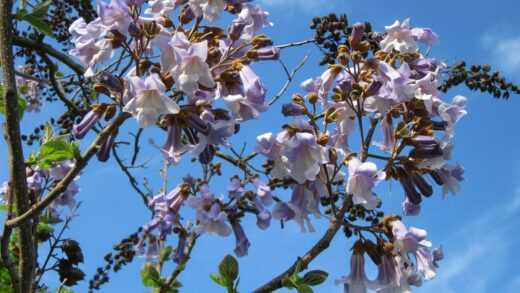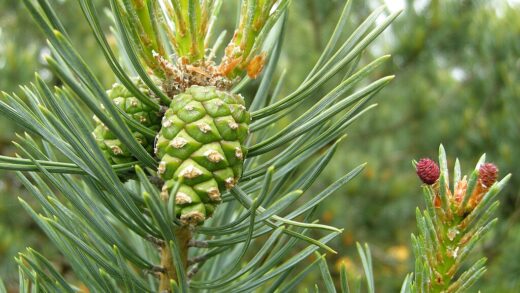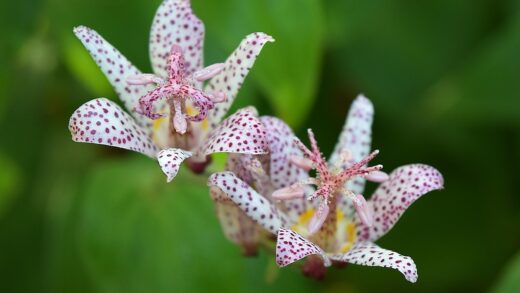The dog rose is a remarkably resilient and low-maintenance shrub, valued for its delicate flowers and nutritious hips. Its care is straightforward, focusing on providing a foundation that mimics its natural habitat while encouraging healthy growth and abundant fruiting. Understanding its basic needs for sunlight, water, and soil is the first step towards cultivating a thriving plant that will grace the garden for years. This robust species is well-adapted to a variety of conditions, making it an excellent choice for both novice and experienced gardeners seeking a plant that offers beauty without demanding constant attention. Successful cultivation hinges on a few key practices, from initial planting to seasonal maintenance, all aimed at enhancing the plant’s innate vigor.
Proper site selection is paramount for the long-term health of the dog rose, as it directly influences its growth, flowering, and hip production. This shrub thrives in a location that receives full sun for at least six hours per day, which is crucial for photosynthesis and the development of vibrant blooms. While it can tolerate partial shade, its flowering may be less prolific, and the plant might become more susceptible to fungal diseases due to reduced air circulation and lingering moisture on the foliage. The soil should be well-draining to prevent waterlogging, which can lead to root rot, a common issue for many rose species. Amending heavy clay soils with organic matter like compost can significantly improve drainage and provide essential nutrients.
The plant is quite drought-tolerant once established, but it benefits from consistent moisture, especially during its formative years and during prolonged dry spells. The key is to water deeply and infrequently, encouraging the root system to grow deep into the soil in search of moisture, which enhances its resilience. A thick layer of organic mulch, such as wood chips or straw, applied around the base of the plant can help conserve soil moisture, suppress weed growth, and regulate soil temperature. This simple step reduces the need for frequent watering and contributes to a healthier soil ecosystem over time.
Finally, while the dog rose is not a heavy feeder, it appreciates an annual application of a balanced, slow-release fertilizer or well-rotted manure in the early spring. This provides the necessary nutrients to support vigorous new growth, abundant flowering, and the development of vitamin-rich hips in the autumn. Avoid over-fertilizing, particularly with high-nitrogen formulas, as this can promote lush foliar growth at the expense of flowers and fruit. A minimalist approach to feeding is often the most effective for this wild species, allowing its natural hardiness to shine through with just a little support.
Soil and location characteristics
Choosing the right location is the single most important decision for ensuring the long-term vitality of a dog rose. This species performs best when it can bask in direct sunlight for the majority of the day. A south-facing or west-facing position is ideal, as this exposure guarantees the light intensity required for robust flowering and subsequent hip formation. Insufficient light not only reduces the number of blossoms but can also lead to a leggy, sparse growth habit as the plant stretches towards the available light source. Therefore, observing the path of the sun across the intended planting area throughout the day is a critical preliminary step.
More articles on this topic
The dog rose demonstrates remarkable adaptability to a wide range of soil types, from sandy loams to heavier clays, but its absolute requirement is good drainage. It cannot tolerate having its roots sitting in waterlogged soil, as this condition deprives them of oxygen and creates a favorable environment for fungal pathogens that cause root rot. To test for drainage, you can dig a hole and fill it with water; if the water remains for more than a few hours, the drainage is poor and needs improvement. Incorporating generous amounts of organic matter, such as compost, leaf mold, or well-rotted manure, is the most effective way to enhance soil structure and improve drainage in heavy soils.
In terms of soil pH, the dog rose is not overly demanding and will grow happily in a range from slightly acidic to slightly alkaline, typically between 6.0 and 7.5. Most average garden soils fall within this spectrum, so pH modification is usually unnecessary. However, conducting a simple soil test can provide valuable insights and confirm the suitability of the site. If the soil is extremely acidic or alkaline, gradual adjustments can be made over time using lime to raise the pH or sulfur to lower it, ensuring the plant can efficiently absorb nutrients from the soil.
Furthermore, consider the physical space the shrub will occupy once it reaches maturity. The dog rose can grow into a large, arching shrub, often reaching heights and spreads of up to three meters or more. Planting it too close to buildings, walkways, or other plants can lead to overcrowding, which restricts airflow and can exacerbate disease problems. Allowing ample space around the plant from the outset ensures it can develop its natural, graceful form without the need for constant, aggressive pruning to control its size.
Pruning for health and bloom production
Pruning is a vital aspect of dog rose care, essential for maintaining the plant’s health, vigor, and aesthetic appeal. The primary goal is to create an open, uncongested structure that allows for excellent air circulation throughout the plant, which is the best defense against common fungal diseases like powdery mildew and black spot. Pruning also stimulates the plant to produce new growth, and since dog roses flower on wood produced in the previous year, a strategic approach ensures a continuous display of blooms. The ideal time to perform major pruning is in late winter or early spring, just before the new growth begins to emerge.
More articles on this topic
When beginning the pruning process, the first step is always to remove any dead, damaged, or diseased wood. This is known as cleaning out the shrub and should be done annually regardless of other pruning goals. Dead stems serve no purpose and can harbor pests and diseases, while damaged wood is a potential entry point for pathogens. Use sharp, clean secateurs or loppers to make cuts back to healthy, white wood. It is also important to identify and remove any crossing branches that are rubbing against each other, as this can create wounds and lead to future problems.
After the initial clean-out, the focus shifts to thinning and shaping the plant. The aim is to remove some of the older, less productive canes to encourage the growth of new, vigorous stems from the base. A good rule of thumb is to remove about one-third of the oldest canes each year on an established shrub. These are typically thicker, darker in color, and may have a woodier appearance. Cut these canes right back to the base of the plant to stimulate the growth of new basal shoots that will be more floriferous in the following years.
Finally, the remaining canes can be shortened to encourage branching and to maintain a desirable size and shape for the shrub. Reduce the length of the main stems by about one-third, making each cut just above an outward-facing bud. This directs the new growth outwards, contributing to a more open and less tangled structure. This type of pruning not only improves the overall health and appearance of the dog rose but also ensures a consistent and impressive display of its simple, charming flowers year after year.
Watering and nutrient management
Although the dog rose is known for its drought tolerance once it has a well-established root system, providing adequate water during its first few years is crucial for its survival and development. Newly planted shrubs should be watered deeply and regularly, ensuring the soil remains consistently moist but not saturated. A thorough soaking once or twice a week is generally more effective than light, frequent watering, as it encourages the roots to penetrate deeper into the soil profile. This deep rooting is what ultimately makes the plant resilient to dry conditions in the long term.
For established plants, the need for supplemental watering depends heavily on the local climate and recent weather patterns. In regions with regular rainfall, mature dog roses may require no extra irrigation at all. However, during extended periods of drought or extreme heat, even established plants will benefit from a deep watering every few weeks to prevent stress. Signs of water stress include wilting leaves that do not recover in the evening, yellowing foliage, and a general lack of vigor. It is always best to water at the base of the plant to avoid wetting the leaves, which can promote fungal diseases.
When it comes to feeding, the dog rose has modest requirements and often thrives in soils of average fertility. In fact, excessive fertilization can be detrimental, leading to a profusion of leafy growth with very few flowers. A single application of a balanced, all-purpose fertilizer in early spring is typically sufficient for the entire growing season. Alternatively, amending the soil with organic matter like compost or well-rotted manure provides a slow release of nutrients and improves soil health simultaneously, which is often the preferred method for this rugged species.
Observing the plant’s growth and appearance is the best way to gauge its nutritional needs. A healthy dog rose will exhibit steady growth, have medium to dark green leaves, and produce a good number of flowers. If the plant appears stunted, has pale or yellowing leaves (a condition known as chlorosis), or fails to bloom, it may indicate a nutrient deficiency. In such cases, a soil test can help identify the specific nutrient that is lacking, allowing for a targeted application of the appropriate fertilizer to correct the imbalance without overfeeding.
Managing common pests and diseases
The dog rose is a relatively robust species with good natural resistance to many common rose afflictions, but it is not entirely immune to problems. One of the most frequently encountered issues is powdery mildew, which appears as a white, dusty coating on the leaves, stems, and buds. This fungal disease thrives in conditions of high humidity and poor air circulation. The best preventative measure is proper pruning to create an open structure that allows air to move freely through the plant. If an infection does occur, affected parts should be removed and destroyed, and horticultural oil or a sulfur-based fungicide can be applied.
Another common fungal ailment is black spot, characterized by dark, circular spots on the leaves, which eventually turn yellow and drop off. Similar to powdery mildew, black spot is favored by wet conditions, so it is important to water at the base of the plant and avoid overhead irrigation. Good garden hygiene, such as promptly removing and disposing of fallen leaves, is crucial to reduce the amount of fungal spores that can overwinter and cause new infections in the spring. In severe cases, a copper-based fungicide may be necessary to control the spread of the disease.
Among pests, aphids are perhaps the most common nuisance, often found clustered on new shoots and flower buds where they feed on sap. A strong jet of water from a hose can often be enough to dislodge a small infestation. For more persistent problems, insecticidal soap or neem oil are effective and environmentally friendly control options. Encouraging natural predators like ladybugs and lacewings into the garden by planting a diversity of flowering plants can also provide excellent long-term aphid control.
A more specific pest that affects dog roses is the rose gall wasp, which lays its eggs in the plant’s tissues, causing the formation of a distinctive, mossy-looking growth known as a Robin’s Pincushion or bedeguar gall. While these galls are visually striking and may seem alarming, they typically cause very little harm to a healthy, well-established plant. The simplest method of control is to simply prune out and destroy the galls as they are noticed. This prevents the wasp larvae from maturing and emerging to create new galls in the following season.
Harvesting and utilizing rose hips
One of the greatest rewards of cultivating a dog rose is the harvest of its vibrant, vitamin-packed hips in the autumn. The hips begin to ripen after the first frosts of the season, which helps to sweeten their flavor and enhance their nutritional content. The ideal time for harvesting is when the hips have developed a deep red or orange-red color but are still firm to the touch. It is best to wait until after the petals have fallen and the hips have had several weeks to mature on the plant, as this ensures they have reached their peak in terms of both taste and vitamin C concentration.
When harvesting, use scissors or secateurs to snip the hips from the branches, leaving a small piece of stem attached. While it is possible to pull them off by hand, this can damage the plant and may be a prickly task due to the thorny nature of the dog rose. It is advisable to wear sturdy gardening gloves to protect your hands from the sharp thorns that line the stems. Collect only the healthy, unblemished hips, leaving any that appear shriveled, discolored, or show signs of insect damage on the plant or for wildlife.
Once harvested, the rose hips need to be processed before they can be used. The first step is to wash them thoroughly and then trim off the stalk and the dried flower remnant at the opposite end. The hips must then be cut in half to scoop out the seeds and the irritating fine hairs that surround them. This is a crucial step, as these hairs can cause significant irritation to the mouth and digestive system if ingested. Although it can be a tedious process, it is essential for preparing the hips for culinary or medicinal use.
The prepared rose hip shells can then be used in a variety of ways. They can be dried for later use in teas and infusions, or they can be cooked down with sugar and water to make delicious syrups, jellies, and jams. Rose hip syrup is particularly famous for its exceptionally high vitamin C content, making it a valuable natural supplement during the cold and flu season. The versatility and health benefits of the hips make the entire process of cultivating and caring for the dog rose a truly rewarding endeavor.


















